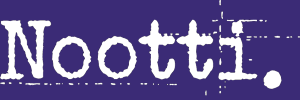Press Release 13.2.2025
The new museum of Finnish–Russian relations symbols the turn in foreign policy
The first museum specialized in the long history of Finland´s relations with Russia, opens in Tampere 15th February 2025. The museum can be interpreted as a manifestation of the turn in Finnish foreign policy after the Russian invasion to Ukraine. Replacing the former Lenin Museum, the new museum deals with the Eastern relations from fresh perspective and continues to the present day in the same premises.
The Lenin Museum was closed in November 2024. It was opened in 1946 to express the turnaround in Finnish policy after WWII. It became a symbol of postwar Finno–Soviet friendship. The museum’s location was chosen by the fact, that young communist leaders Lenin and Stalin had met each other there for the first time. The secret Bolshevik meeting in Tampere in 1905 was a moment in world history, and therefore the Lenin Museum served as a stage for Finnish diplomacy during the Cold War era. It was claimed that Lenin promised independence to Finns while visiting Tampere. Especially president Urho Kekkonen overstressed Lenin’s role as a friend of Finland for Soviet leaders.
The museum was revamped in 2016 to focus on Soviet history instead of Lenin’s life. The timeline of the exhibition reached to the collapse of the USSR in the 1990s. Recent authoritarian changes in Russian society, the war in Ukraine, and icy relations between the neighbours caused an urgent need to update the display. It turned out, that it was best to open a brand-new museum instead.
The new Museum of Finnish-Russian Relations is named “Nootti”. The Finnish word “Nootti” refers to a diplomatic note. The most famous note was sent from Moscow in 1961, when the Soviets intervened in presidential elections in Finland. During the Cold War, Finland was formally a neutral country, but very prone to Soviet influence.
Finland´s position as a small, friendly nation neighbouring superpower also created a political concept still known as Finlandization. It means, how a smaller country takes bigger neighbour’s possible opinions to account pre-emptively. For example, the Finnish press was particularly cautious when reporting the drawbacks of the USSR. Surprisingly, Finlandization has been recently resurrected as a possible political model for some unfortunate countries.
After the collapse of the Soviet Union, Finland joined the European Union in 1995 and headed its exports to the Western markets. Soviet trade had dominated the Finnish economy since the 1950s. However, the relationship with Russia developed too and Finns experienced increased levels of tourism, trade, and investments up to the mid-2010s. The Russian invasion to Ukraine was a turning point in many ways.
“Finland has 1344 kilometres of border with Russia, more than other members of the European Union combined. Geography has always defined Finnish foreign policy and history,” comments museum director, PhD, Kalle Kallio. “In three years, Finland has abandoned old friendship policies andpositioned itself as a front-line country of NATO. Relation to Russia keeps defining the Finnish news and history alike. We need a museum to tell the long story.”
The themes of the new museum include (in chronological order) the collapse of Russian empire in 1917 and Finnish independence, the civil wars on both sides of the border, the fate of the Soviet Finns during Stalin’s terror, the miraculous Winter War in 1939–1940 and Finnish alliance with Hitler in 1941–1944, the official friendship policy during the Cold War, Finlandization, secret services, bilateral trade, cultural relations and tourism from 1950s and important political events up to the membership of NATO in 2023.
The themes of the museum are depicted with various objects and photos from national and international collections. However, the museum has not done any co-operation with the Russian state or with the Russian museums. The new museum “Nootti” is operated by the Finnish Labour Museum Werstas, a national museum of social history. The museum is funded by the city of Tampere and the Ministry of Culture and Education.
Additional Information
For more details, please contact:
Museum Director Kalle Kallio
Tel: +358 40 716 7520
Email: kalle.kallio@tyovaenmuseo.fi
Researcher Katarina Lopatkina
Tel. +358 50 327 7735
Email: katarina.lopatkina@tyovaenmuseo.fi
Press photos
Negotiation table of turns in foreign policy. Finland joining the Nato is tha latest event on display.
Photo: Mikko Vares→ Lataa kuva
The bicycle asylum seeker used crossing the border in 2023 before the crossings were closed.
Photo: Mikko Vares→ Lataa kuva
The fate of Finnish families in the Soviet Union is one of the themes in the museum.
Photo: Mikko Vares.→ Lataa kuva
